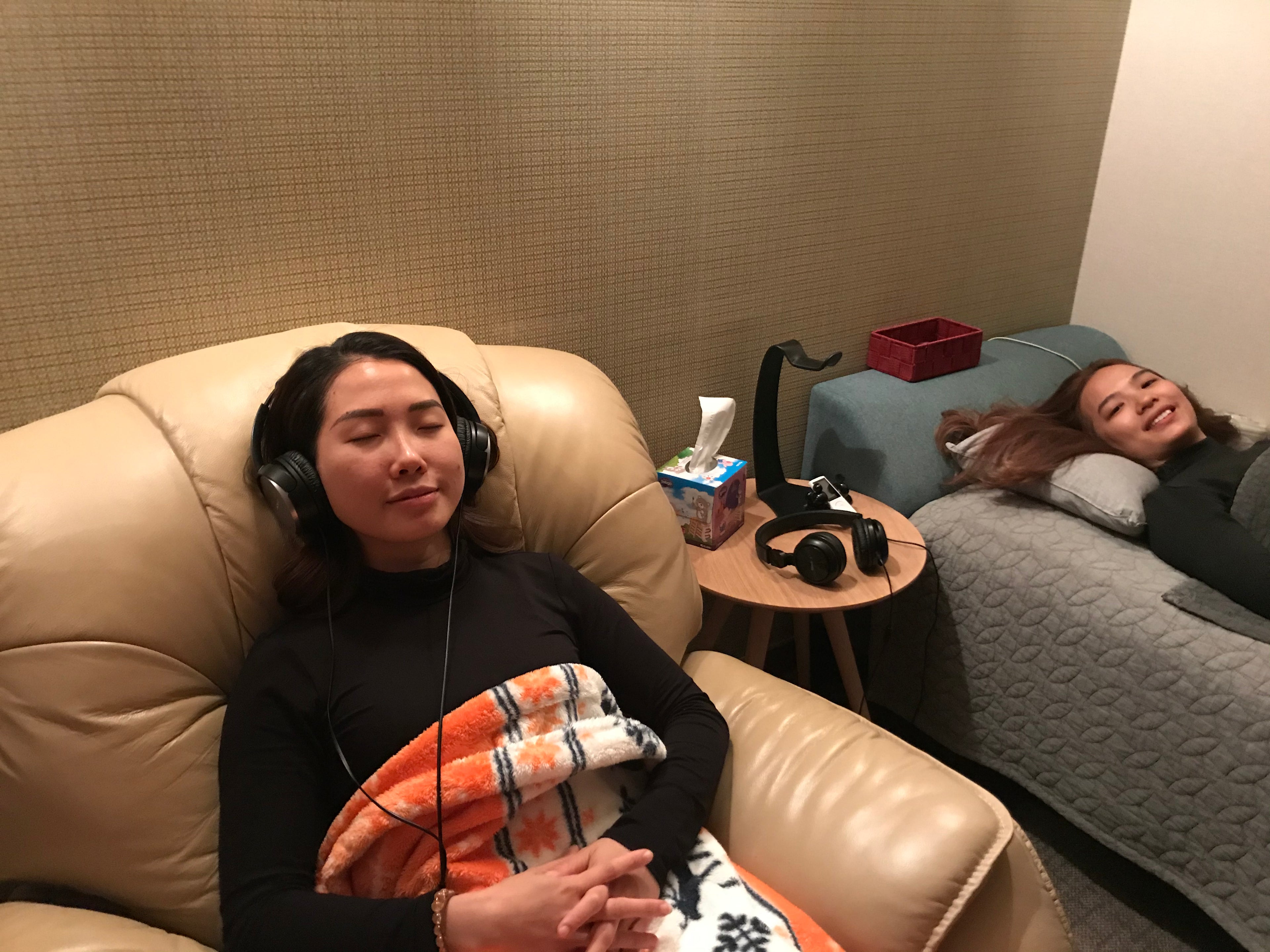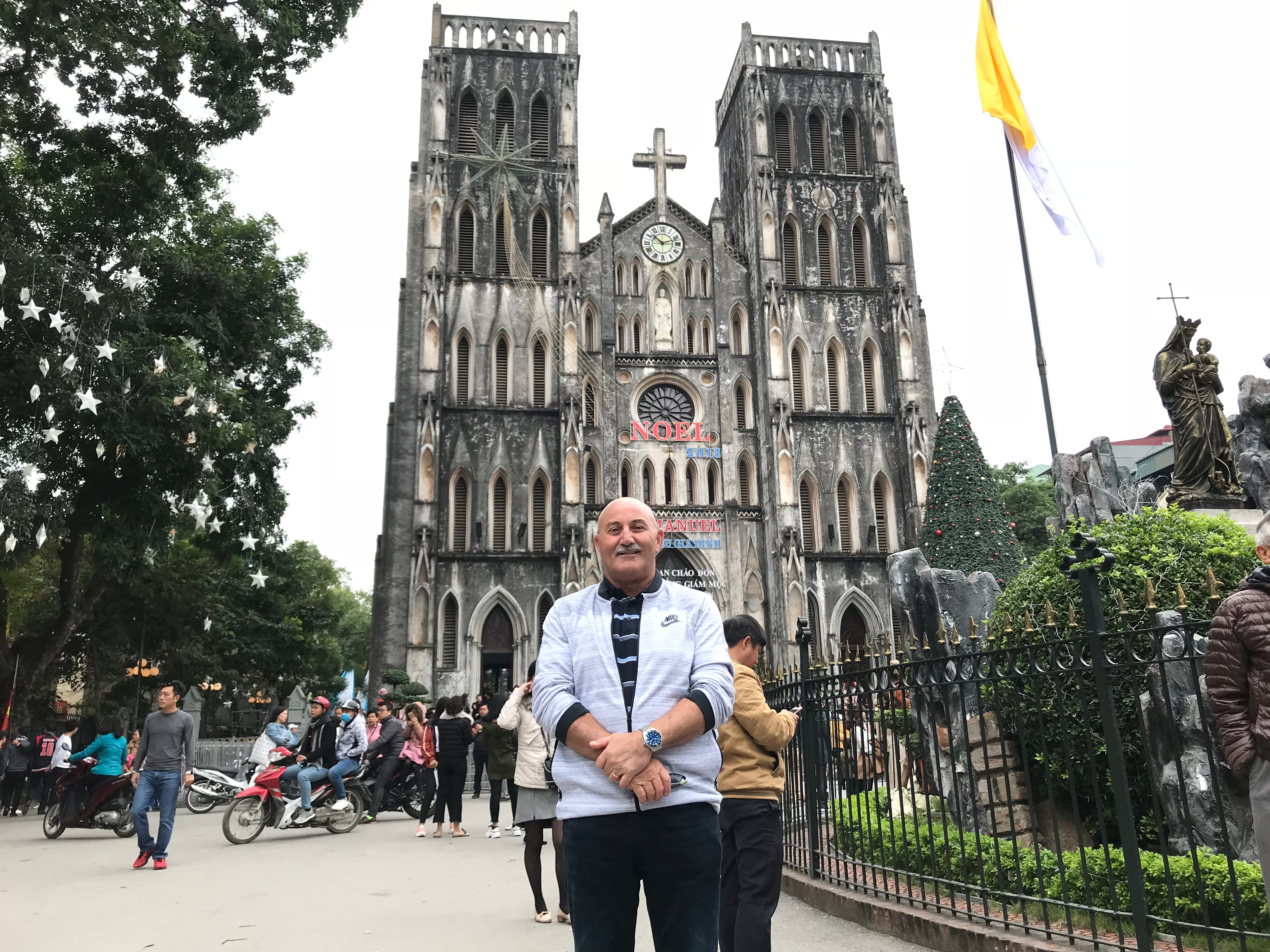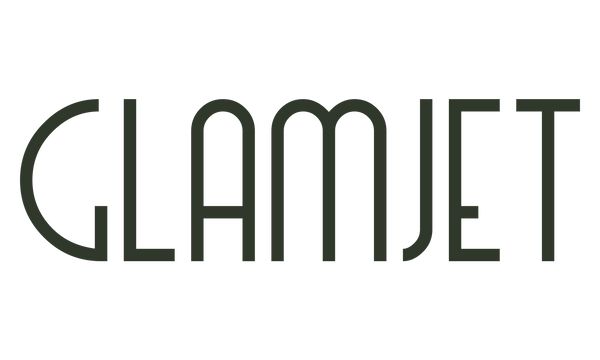
Hi. We're Glamjet.com.au
Your Direct Flight to Beauty & Wellness
Glamjet is Australia’s trusted beauty & wellness tourism platform, connecting you to 35 most reputable clinics and hospitals in South Korea, Japan, Vietnam, and Thailand.
We curate world-class cosmetic, dental, and wellness treatments into luxury holiday packages giving you access to expert care, seamless planning, and exclusive experiences, all at exceptional value.
From the first consultation to your flight home, Glamjet takes care of everything so you can focus on feeling confident, recharged, and glamorous.

Our Story
From Dreamer to Difference-Maker
It all started with a simple question: "Why pay more for less?” – Sarah Hien Tran, Founder & CEO
Sarah’s passion for beauty began in a small Vietnamese village, where her aunt introduced her to the magic of makeup. Her journey took her across the globe studying international business in the Netherlands, earning a Master of Accounting in Australia, and later diving deep into the aesthetics world in Seoul, South Korea.
A personal vision surgery in Korea opened her eyes not just literally, but to the unmatched standard of care, technology, and hospitality available overseas. She realised that foreigners without insider help faced huge challenges language barriers, confusing healthcare systems, and the risk of tourist traps.
So, she created Glamjet - a platform where trust meets transformation, giving her clients a safe, curated, and luxurious pathway to the treatments they deserve.

Why Choose Glamjet?
We solve the biggest challenges of medical travel. We help you save up to 70–80% without compromising quality with flexible payment plans for international clients and interpretation service.
Our 3S Solutions:
1. Safe: Only the best providers, certified surgeons, and top-rated facilities.
2. Simple: Glamjet makes medical travel effortless. We organise bookings, flights, hotels, airport transfers, tours, and aftercare.
3. Saving: Exceptional value without cutting corners.
Meet Tia from New Zealand client. She changed her smile in Vietnam with Glamjet in 5 days.

The story started in 2019. After finishing master in Accounting in Australia, our founder went to South Korea to study aesthetics.

2019: Our founder, Sarah, had laser eye surgery in South Korea while studying aesthetics there. She saved $6,000 AUD and have a wonderful experience. She also know challenges that a foreigner would face. Glamjet was born to bridge the gap. Safe, simple, and savings solution designed around you.

2020: Our business grew and with expanding partnerships in Vietnam and Thailand. We had to shut our business down because of Covid.

2023: Relaunched our business with bigger vision. Partnerships with 35 leading hospitals and clinics across Asia. We are not here to sell you a procedure. We are here to curate an experience that feels safe, joyful, and personal.

2025: Our vision is to be the leading beauty , dental, and medical tourism booking platform in Australia and APAC. We'll launch our reward system and mobile app to help you book your transformation effortlessly.
How To Work With Us?
Pay the same price or less than booking directly but get more value
Honestly? Right now, zero. We’re waiving our concierge fees for all of 2025 so more people can experience the Glamjet difference.
Here’s the deal: You’ll pay the same price (or less) than booking direct, but you’ll get way more value. Many of our clients score 10–30% discounts simply by booking through us.
We’ve already vetted the best providers across South Korea, Vietnam, Thailand, and Japan so you skip the 50–100 hours of research and planning (read: stress). Instead, you get to kick back, sip your coffee, matcha, (or champagne 🍾), go to pilates or gym, and prep for your New Me Era. Let's reveal the confident, glowing version of you that’s been waiting to step out.
Our past clients tell us they’d happily pay $1,000–$1,500 AUD for our planning alone. We're going to spoil you. We're handing you the upgrades, bonuses, and time savings for free this year.
We plan your beauty holiday in hours, not months. You invest in your healing, your growth, and your glow-up and we’ll make sure you rip all the rewards.
All we ask for is for you to tell as many people about the work that we do and tag @glamjetofficial and share your experience. It'll help us help more of you.
Why should I book through Glamjet instead of doing it myself?
Because we’ve already done the hard work for you. We’ve vetted surgeons, dentists, and clinics we work with. No guessing, no horror stories, no tourist traps. We know which providers deliver results worth travelling for. Our team can package it all with flights, hotels, airport transfers, interpreters, and VIP touches so you never feel alone. We are based in Melbourne, Australia with staffs overseas who can accompany you to hospitals and clinics per request. You save 50–100+ hours of planning (and a few grey hairs), and gain insider access to bonuses, upgrades, and real peace of mind.
What happens if something goes wrong after I return home?
Here’s the reality: if you book on your own and something happens after you get home, you’re on your own. You’ll need to chase the overseas clinic yourself often in a language you don’t understand and wait days (or weeks) for a reply. If it’s urgent, you might end up scrambling for local help without guidance, while worrying about whether you’re making the right decisions for your recovery.
When you book with Glamjet, it’s a completely different story. We are your point of contact. If anything unexpected happens, you reach out to us first and we handle the follow-up with your treating clinic or hospital directly. We can arrange urgent telehealth consultations, get your medical notes translated, and give you clear instructions on what to do next. If you need hands-on care, we’ll direct you to a trusted emergency clinic.
For dental clients in Australia, we even have partner dentists in Melbourne, Sydney, Brisbane, Perth, and the Gold Coast who can help with minor emergencies (you’ll cover local treatment costs) while you wait to return to your original clinic for any revision work covered under your treatment plan.
The truth is, in all our years of operation, we’ve never had a major post-treatment emergency. That’s because we plan every journey with precision and only work with leading hospitals and highly experienced specialists. Our goal is to prevent problems before they happen.
We don’t wave goodbye at the airport and disappear. Your Glamjet journey includes aftercare that actually cares. If you have questions, concerns, or even the tiniest “hmm, is this normal?” moment once you’re back home, we’re just a call, text, or video chat away.
The only case we’ve had was one dental client who had a veneer come loose. Before treatment, she’d been advised this could happen because her old bridge (done years ago by a different, non-Glamjet provider) was incorrect. Fixing her bite fully would have required more extensive dental work, which wasn’t in her budget at the time. Even though her situation was a pre-existing condition (and therefore not covered under the dentist’s guarantee), our partner made an exception. She had the veneer glued back locally in Melbourne for $180 AUD, and she’s now planning to return to Vietnam to replace the problematic bridge and fix her bite completely.
So while we can’t promise nothing will ever happen, we can promise that if it does, you’ll never be left chasing answers alone. You’ll have Glamjet by your side from the moment you land overseas to long after you’ve returned home.
Because for us, your New Me Era doesn’t end when you arrive home. It begins.
Start your journey by filling in this consultation form and we'll answer your concerns and help you make an informed decision.
Do you offer payment plans?
Yes. They’re designed to make your transformation achievable without financial stress. For all clients, you have access to 0% interest instalments (prepaid) for up to 12 months with $5 AUD admin fee per month.
For Australians, we offer weekly payment plans from AUD $30/week with Total Life Credit, early superannuation access for eligible clients. Fill in our consultation form to learn more.
For New Zealand, there are few companies offering personal loans for beauty and medical treatments: Harmoney, Novamedical, West Pac Personal Loan
If you are from America, read this article about 6 top personal loan providers for cosmetic surgery and dental.
We also prepared a detailed article with credit card & other financing options here.
Alternatively, you can find financing options in your home country. We'll help provide reasonable documents once you pay deposit. You focus on the glow-up, we’ll handle the boring paperwork. Deposit will be fully refundable if your financing application is rejected.
DISCLAIMER
Glamjet is not a credit provider. We do not offer personal loans, credit, or any form of direct funding for medical, dental, or cosmetic procedures. We do not provide legal or financial advice.
If you require financing, we can connect you with independent, licensed funding partners who specialise in medical tourism payment solutions. Any funding is subject to the lending partner’s own criteria, terms, and fees. Please note: Glamjet may receive a referral fee from these partners — this is not charged to you. You are under no obligation to use our recommended partners and are welcome to arrange your own financing.
We strongly encourage you to consider carefully whether financing your procedure is right for you. Make sure you understand the full legal and financial obligations before entering into any agreement. If you have any concerns or doubts, we recommend seeking independent legal and financial advice.
The information on this website is general in nature and does not take into account your personal objectives, financial situation, or needs. Please assess whether any product or service is suitable for your circumstances before proceeding.
